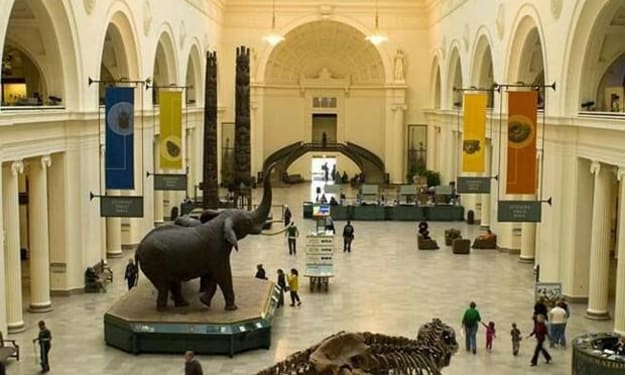Exploring the Enigma of Giant Single-Celled Creatures
Giant Single-Celled Creatures

When envisioning a single cell, most of us conjure an image of a minuscule entity visible only through a microscope. This is a valid perception, considering the majority of cells on Earth are indeed microscopic, particularly when we consider organisms composed of just one cell. Yet, there are captivating exceptions that challenge this norm. The world of biology harbors giant single-celled creatures that defy convention and reshape our understanding of life, both at the cellular level and beyond. In this exploration, we will delve into six remarkable examples of these exceptional cellular anomalies.
Stentor coeruleus: The Magnificent Trumpet-Shaped Cell
The Stentor coeruleus, resembling a trumpet, was initially mistaken for a hydra—an aquatic organism with thousands of cells. However, the stentor is solitary, representing a single cell of colossal proportions in the unicellular realm. Growing up to two millimeters in length, it defies the typical small size of cells.
One of the primary reasons cells remain small is the challenge of control. Larger cells encounter delays in transmitting information across their expanse. Stentors, however, manage their considerable size by utilizing an elongated macronucleus that distributes genetic material as needed. With the assistance of numerous small micronuclei, stentors engage in a primitive form of reproduction—simple division into two.
Yet, the most astonishing trait of stentors lies in their regenerative abilities. Unlike most cells, a Stentor can regenerate effectively even after being severed. Intriguingly, nearly any fragment of a stentor can regrow if it contains a part of the macronucleus and a snippet of the original cell membrane. Scientists continue to explore the mysteries behind this creature's unique healing prowess, including how it retains its cellular contents after being cut open and how different fragments regenerate distinct structures.
Gromia: The Enigma of Ancient-Like Movements
In the depths of the ocean, at around 1200 meters below the surface, reside peculiar organisms known as Gromia. These grape-sized, hard-shelled creatures were discovered in the early 2000s, baffling researchers with their peculiar movements and structures. They belong to the group of testate amoebas, amoebas that create protective, porous shells known as tests.
Gromias exhibit sluggish locomotion by extending pseudopods—tiny projections resembling feet—through holes in their tests, leaving discernible tracks in sediment. These tracks bear an uncanny resemblance to fossilized marks dating back 1.8 billion years, which were initially thought to be evidence of multicellular life. Gromias' discovery shook the evolutionary timeline, challenging the long-held notion that multicellular organisms emerged later. This unique organism redefines our understanding of early life forms.
Spiculosiphon oceana: A Deceptive Predator in Single-Cell Form
In the intricate ecosystem of hydrothermal vents off Sicily's coast, a surprising discovery was made in 2013. Creatures resembling sponges were found, but closer inspection revealed they belonged to the single-celled foram group. These organisms, known as Spiculosiphon oceana, craftily mimic carnivorous sponges by assembling spicule-like structures for capturing prey. Their imitation of multicellular predators reveals the complexity of interplay within ecosystems.
These unusual forams provide valuable insights into undiscovered hydrothermal vent locations, acting as indicators of recent vent activity. Furthermore, their susceptibility to ocean acidification may signify broader climate change effects, offering a unique perspective on the health of marine environments.
Valonia ventricosa: The Grandeur of Giant Algae
Valonia ventricosa, often referred to as "sailor's eyeball" due to its appearance, showcases an impressive growth of up to four centimeters or more. Its large size is maintained through multiple nuclei within a single cell. Valonia's cell wall, rich in cellulose, resembles the fibrous substance found in plants and has contributed to advances in cellulose-based products.
Through its remarkable growth and structure, Valonia's uniqueness has paved the way for studying cellulose's microfibrillar composition. These insights have significantly impacted industries relying on cellulose-derived materials.
Acetabularia: Nucleus as Control Center
Acetabularia algae, also known as mermaid's wine glass, can reach heights of 10 centimeters. These single-celled organisms feature a large nucleus at their base, significantly contributing to our understanding of nucleus functionality. Early experiments involving Acetabularia helped establish the nucleus as a cell's control center, influencing its regenerative capacity and characteristics. Acetabularia's reproduction process, involving the migration of genetic material, underscores its role in shaping our comprehension of cellular behavior.
Caulerpa: Mastering Complexity in a Single Cell
Caulerpa algae challenge convention by growing extensively, with some species covering over a square meter. Despite their enormous size, Caulerpa cells are interconnected and coordinated, resembling the functions of multicellular organisms. Their interconnectedness through plasmodesmata—channels facilitating communication—sparks debates on whether certain plants should be regarded as single-celled entities.
Although these giant cells deviate from the microscopic norm, they offer invaluable insights into cellular processes, structure, and communication. Their aquatic habitats provide a controlled environment that eases the challenges of large cell maintenance. By unraveling the mysteries of these exceptional cells, scientists expand our understanding of both single-celled and multicellular life forms.
Challenging Cellular Paradigms
In the realm of biology, these colossal single-celled creatures stand as remarkable anomalies, defying size expectations and expanding our knowledge of cellular capabilities. While their presence may be rare, they play a significant role in advancing our comprehension of cellular dynamics. These aquatic giants, each with its distinct attributes, serve as living laboratories, offering insights into the intricate world of cellular biology and prompting us to rethink our understanding of life itself.
About the Creator
Enjoyed the story? Support the Creator.
Subscribe for free to receive all their stories in your feed. You could also pledge your support or give them a one-off tip, letting them know you appreciate their work.





Comments
There are no comments for this story
Be the first to respond and start the conversation.